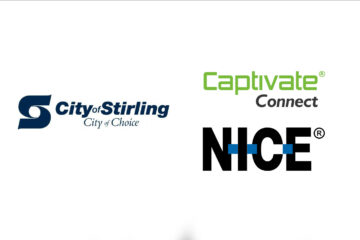Forrester defines the difference between customer service and customer experience as that while customer service is one piece of the puzzle — focused on human interaction and directly supporting customers, customer experience is the sum of the entire customer journey within your business.
Gartner defines customer experience as the customer’s perceptions and related feelings caused by the one-off and cumulative effect of interactions with a supplier’s employees, systems, channels or products.
The key differentiator is that the Customer Experience is the emotion generated by the customer. It is important to consider the reasons why it is critical that a customer ‘feels’ an emotional attachment to our business.
Let’s go back to the 90s when any business could get sales by sticking an ad in the paper. Those with bigger budgets did radio and TV, corporations advertised extensively, and enterprises flooded the print and airwaves. This created brand strength and sales so the ROI was there as businesses differentiated themselves.
In the early 21st century, the internet kicked in and added another medium for everyone to advertise on and in. The Internet has brought suppliers and customers closer than ever before and removed many trading constraints based on geography. Take Captivate Connect; we do more new business in the US than we do in the country we are based in – all thanks to the internet, and the power of information.
In the last decade, we have seen some very major changes to business- commoditisation, print media becoming impotent, and television advertisement effectiveness grossly diminished as consumers get their news and entertainment online. The development of ad blockers has also affected digital advertising effectiveness.
The globalisation of businesses has led to reduced prices for many products and services and has decimated the retail sector of many countries as consumers prefer the convenience of online shopping and home delivery.
Disrupting the Traditional
We have to wonder what allows disruptors into any market. Let’s examine a few. Taxi companies blame Uber for hurting their cosy businesses. Had the taxi industry not become lazy and complacent about its foundational level of customer experience, then Uber would not have been as impactful to the industry. Uber did not have a patent on an App that stopped taxis from doing better.
Other examples of disruptors are Trivago, Booking dot com, and a plethora of other hotel booking sites. These sites collated hotel rooms and gave the consumer a single source of room selection by location, price, and rating. This concept takes into account the ease of use for customers, solving a pain point and making their hotel booking processes far easier than before. Hotels are still trying to maintain their margins and making promises to price match in their internal booking systems, but not quite succeeding in winning back that market share.
Another comes back to our Uber friends – Uber Eats, DoorDash, Deliveroo, and many others are double dipping – charging the consumer for delivery, plus taking about 35% of the restaurant bill for the pleasure. They have found a way for those seeking jobs to make a few extra dollars outside of the traditional 9-5, or back-breaking shift work that is usually expected in hospitality. The restaurants are suffering as consumers choose to dine at home.
Consider the deeper, long-term impact of the Ubereats, Trivagos, Ebays and Amazons of the world. If you purchase a product online from Amazon, what brand recognition do you have for the product afterwards? Do you remember the manufacturer of the product, or is ‘a great product from Amazon’ at the top of your mind? Do you feel an emotional connection to Amazon?
Commoditisation
Let’s now consider commoditisation. As of 2019, China holds a massive 28.7% share of global manufacturing output. While it is of course possible to buy products made elsewhere, chances are that there will be a similar product available that is less expensive, leading to a huge lack of market differentiation. We live in a society championing rapid consumption, where people value quantity over quality.
Commoditisation refers to a good or service becoming indistinguishable from similar products, having an almost total lack of meaningful differentiation. Commoditized products have thin margins and are sold based on price and not the brand. This situation is characterized by standardized, cheaper, and common technology that rewards suppliers that lower their prices further. It is important to note that commoditisation lowers prices.
So when a business does not want to be seen as ‘the same as everyone else”, by chasing prices to the bottom and squeezing margins what can it do?
Moving Forward
It must make the business different in the mind of the customer. To do this, businesses need to create a connection. Not an Amazon dot com type of relationship, but one where the customer forms an emotional connection to the brand. Create a relationship and experience that is memorable long after price is forgotten.
In their Book “Building Great Customer Experiences” co-authors Colin Shaw and John Ivens confirm that to provide a better customer experience, you must exceed the expectation of the customer. This is critical in forming that emotional connection.
Consider a range of business sizes to see what can be done in each case to boost CX. Micro-businesses can form meaningful, personal relationships with each customer by going above and beyond traditional expectations. This can be anything from the local plumber fixing an extra leaky tap free of charge, or your hairstylist throwing in a complimentary blow-dry.
Next, look at a small business with 10 – 50 employees. Can you teach every one of them to consistently go above and beyond for the customer? Your expectation of what makes a ‘good customer experience’ should not differ from your staff’s.
Larger corporations have the most to give and the most to gain from improving customer experience as generally they are not too good at it. Offshore call centres are staffed by people who do not have the same customer-focused training opportunities available. In addition to this, they are typically the least expensive option.
Why, in the age of the customer do corporations with massive amounts of money behind them settle for less? Modern technology has made it possible to delight customers at this touchpoint and increase brand loyalty. Is it a lack of interest in caller experience? Or just laziness?
Exceed Expectations
Research by Gartner showed that 90% of businesses worldwide have a Chief Customer Officer or equivalent. Now is the time for the CCO of a business to innovate, and put the experience of the customer first.
Shaw and Ivens said ‘to improve CX you must exceed expectations”. The general expectation of On Hold music and messages is ‘boring, repetitive and never changing’. This provides an opportunity to exceed expectations, challenge the norm. Prove to customers that not all companies on hold are the same.
Captivate Connect recently surveyed consumers as to what they disliked about waiting on hold. The major standout responses to the study were the amount of time wasted waiting, and the lack of current messages. Consumers feel as though a generic on hold message and music solution is no longer worth the wait. Consumers are time-poor and unless we entertain, inform or educate them, the perceived wait time is higher than real-time.
To get this technology, you do need a smartphone system. Speak to us so you don’t end up with ineffective call centre solutions. Instead, allow your customers to feel valued at every point along their journey.
But don’t just think about it. We have some catching up to do to stay ahead of the competition on this new battlefield called CX. Contact Captivate Connect today to find a personalised solution for your business.



0 Comments